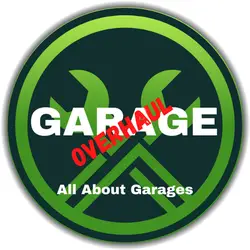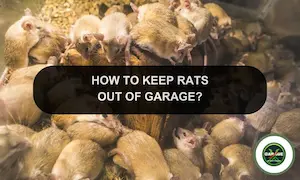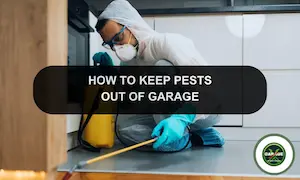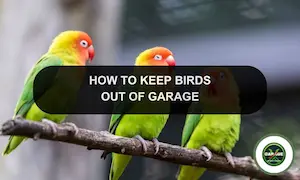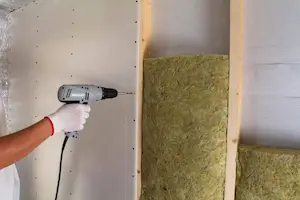How To Get Rid Of Moths In Garage: Remove Moths In Your Garage
This post contains affiliate links.
This post contains affiliate links.
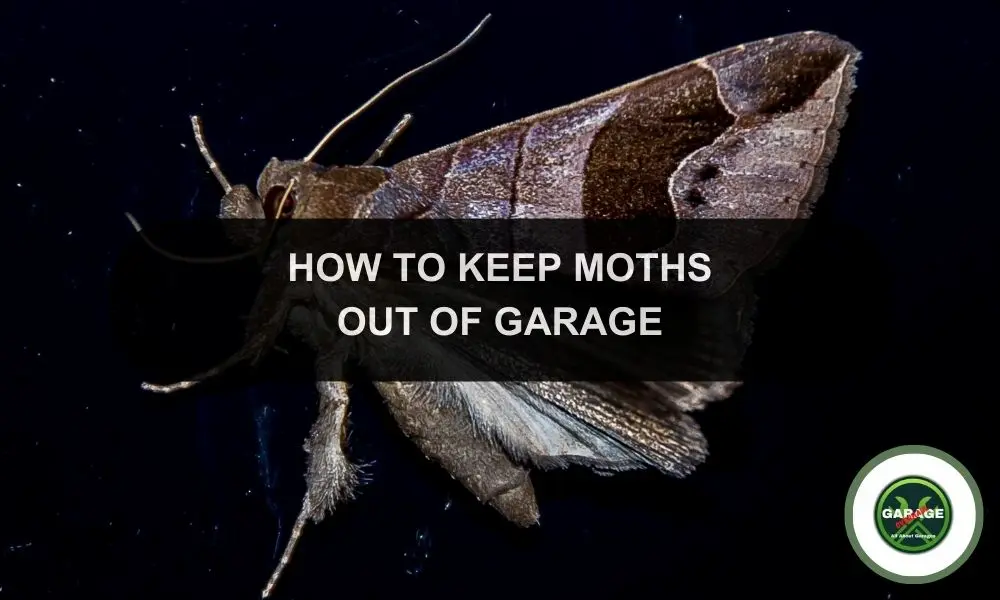
Garages can be very attractive to all sorts of pests and vermin. Moths are one of the more common ones. If you are suffering from this very problem, you may wonder how to get rid of moths in garages.
To remove moths from garages:
- Clean Your Garage Thoroughly
- Use Moth Traps
- Store Dry Goods Properly
- Seal Entry Points
- Use Natural Repellents
- Maintain Low Humidity
- Implement Good Storage Practices
- Regular Pest Inspections
In this post, we explore how you can get rid of moths in garages and how to prevent them from coming back again.
Why Do Garages Attract Moths?
Moths in your garage can turn from a minor nuisance to a significant problem if not addressed. Understanding why your garage might be inviting these insects is the first step towards safeguarding your home.
Your Garage Has A Pantry
Garages often store vehicles and various items, including pantry overflow. Items like birdseed, pet food, and even less obvious pantry pest attractants like food can entice moths.
These insects are constantly looking for food sources for their larva, and your garage might just be the perfect pantry moth buffet.
Moisture
Moist environments are another moth magnet. Garages, especially those less ventilated or with leaking issues, provide the moisture moths need to thrive.
This moist setting attracts moths and aids in developing moth larvae into adult moths, perpetuating the infestation cycle.
Lighting
Lighting in garages can also attract moths, especially at night. Moths are naturally drawn to light; an open garage with lights on is like a beacon for these insects.
Once inside, finding dark, undisturbed nooks and crannies to lay their eggs is easy for them.
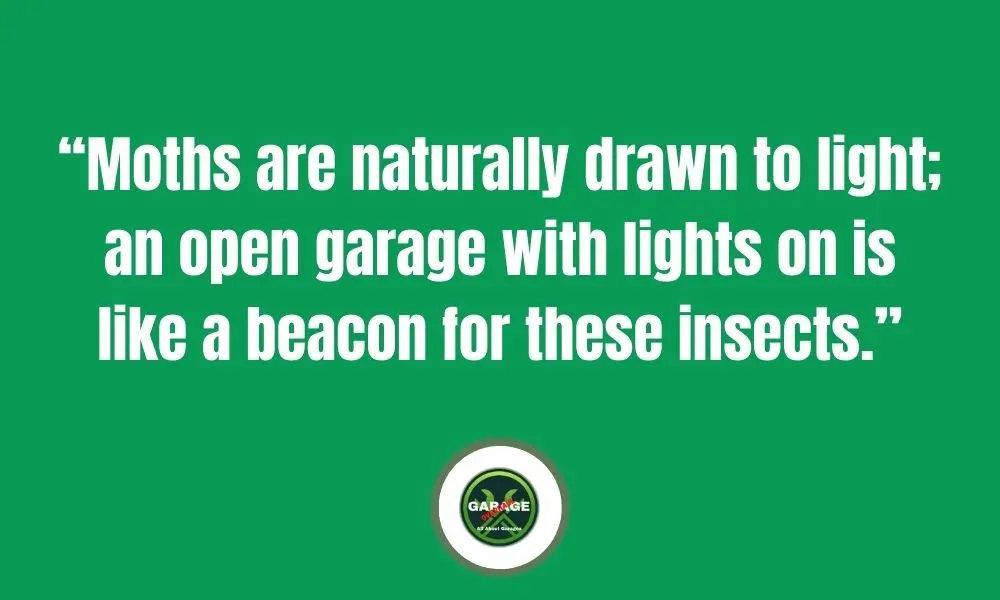
Lack Of Pest Control Measures
The lack of pest control measures in garages makes them safe havens for moths. Unlike homes where pantry moth traps, cedar, or rosemary might be used to deter these pests, garages often go unprotected.
This oversight allows moths to enter, lay eggs, and multiply without hindrance.
Your Garage Has Gaps & Holes
The structure of many garages, with their small cracks and openings, provides easy access for moths. These entry points are not just pathways but also breeding grounds.
Sealing these gaps can significantly reduce the chances of moths making your garage their home.
Types Of Moths In Garages
Moths find a haven in your garage for various reasons. Here are a couple of types of moths likely to call your garage home:
Indian Meal Moth: Known for its appetite for grains, it might surprise you by its presence here. With a penchant for dry goods, its larvae can find ample food in less obvious places like birdseed or pet food stored in garages.
Brown House Moth: A traveler from Asia, is not picky. Its larvae can feast on various items, from pantry goods to the natural fibers in stored clothing or upholstery, making garages a potential site for its diverse diet.
Mediterranean Pantry Moth: Identifiable by its unique resting pose and the damaging trail its larvae leave in food. Its preference for flour and cereal can lead to your garage if such items are stored there, even momentarily.
White-Shouldered House Moth: These moths thrive in warmer environments, making heated garages a perfect winter retreat. Its omnivorous larvae pose a threat not just to food but to various organic materials you might store.
Webbing Clothes Moth: True to the name, these moths might find their way into your garage if they store textiles. This moth’s larvae are notorious for their destructive feeding habits on fabrics.
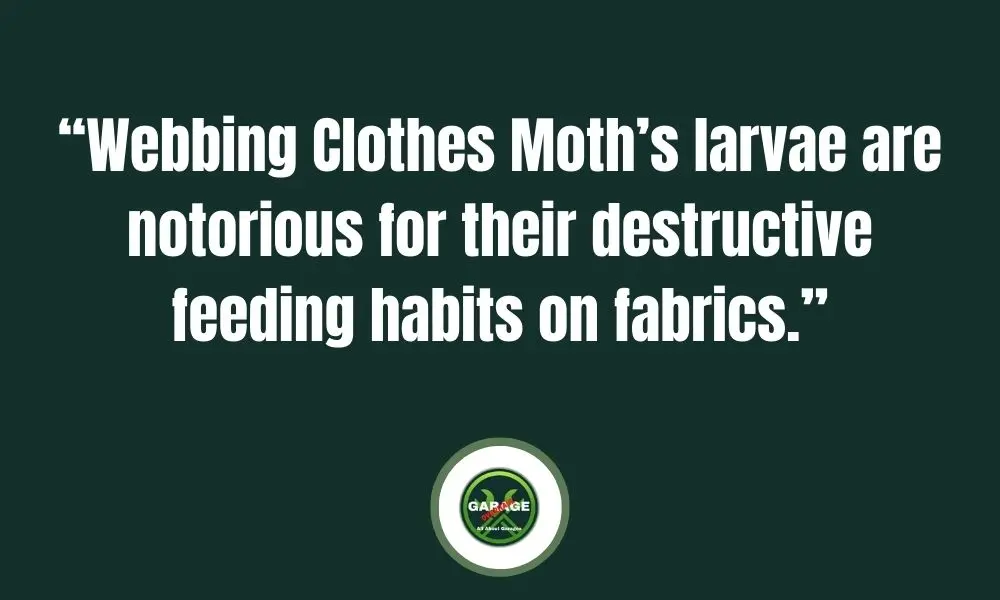
Signs Of Moth Infestation In Your House And Garage
Moth problems can creep up to you without you realizing it. Here are a couple of signs to take note of:
Silken Webbing
Silken webbing in your pantry is a tell-tale sign. Pantry moth larvae weave this around food items, creating a protective cocoon. You might notice this webbing in bags of:
- flour,
- rice, or
- where dry goods are stored.
It’s not just unsightly; it indicates that moth larvae consume and contaminate your food.
Holes In Your Clothing
Holes in your clothing are another classic symptom. Clothes moths, in their larval stage, feast on natural fibers like:
- wool,
- silk, and
- fur.
Finding irregular holes in garments stored in your closets or even in fabrics in your garage should raise a red flag. These pests can sneak into the most unsuspected places, including stored winter clothing or old upholstered furniture in your garage.
Small Larvaes
Finding small, rice-like larvae is a direct indicator of an infestation. These moth larvae can be found in your pantry, munching on your dry goods, and in darker, undisturbed areas of your garage, where they might feast on organic materials.
You See Adult Moths
Adult moths are often mistaken for harmless visitors, but their presence, especially in numbers, can indicate a breeding ground nearby. Address this early to prevent them from infesting your garage.
Pantry and clothes moths tend to avoid light, so spotting them frequently inside your home or garage suggests they don’t have to travel far from their food source or nesting area.
Moth Eggs And Larvae In Traps
Placing moth traps in your home and garage can help monitor and control the population. Moth eggs or larvae in traps can confirm your suspicions.
At this point, you may want to consider a more aggressive removal method to get rid of moths from your garage.
How To Get Rid Of Moths In Your Garage
Moths in your garage can be more than just a nuisance; they damage many stored items and even find their way into your home. Here are some effective strategies to rid your garage of moths and ensure they don’t return.
Clean Thoroughly
Begin with a deep clean. Moths thrive in dusty, undisturbed areas, so vacuum every corner, shelf, and nook. Pay special attention to cracks and crevices where moth eggs might hide.
Regular cleaning disrupts the lifecycle of moths, removing eggs and larvae before they become a bigger problem.
Use Moth Traps
Install pheromone moth traps(paid link) specifically designed for the type of moth you’re dealing with, whether pantry or clothes moths.
These traps lure adult moths, preventing them from reproducing. Regularly check and replace these traps to keep moth populations under control.
Seal Entry Points
Inspect your garage for small cracks and openings where moths might enter. Seal these gaps with caulk or weather stripping. Pay special attention to:
- doors,
- windows, and
- vents.
Ensuring your garage is tightly sealed can significantly reduce the chances of moths and other pests getting inside.
Use Natural Repellents
Cedar, lavender, and rosemary are known to repel moths. Hang sachets of these natural repellents(paid link) around your garage, or use cedar blocks in areas where you store clothes or fabrics.
These natural options provide a safer alternative to chemical repellents.

How To Prevent Moths From Coming Back?
Now that you have removed the attracting factors that cause moth problems in the first place, the next step is to ensure the problems do not come back. Here’s a couple more things you can do:
Store Dry Goods Properly
Moths often enter garages in search of food. If you store pet food, birdseed, or any pantry overflow in your garage, ensure they’re in tightly sealed containers.
This deprives moths of their food source, deterring them from settling in. These airtight containers(paid link) may be expensive but will be worth it in the long run.
Maintain Low Humidity
Moths are attracted to moist environments. Use a dehumidifier in your garage to maintain a dry atmosphere. This makes the environment less hospitable for moths, which prefer more humid conditions to lay their eggs.
Also, check the piping, hoses, and drains in and around your garage for leakages. Moisture from these leakages must be dealt with to deny the moth’s sources of moisture.
Implement Good Storage Practices
Avoid storing clothes in the garage, especially woolen and silk items, unless they are in airtight containers. Moths are attracted to natural fibers found in:
- clothing,
- carpets, and
- upholstery.
Using plastic containers or vacuum-seal bags(paid link) can protect these items from moth damage.
Regular Pest Inspections
Even with preventive measures, moths can sometimes find a way in. Regular inspections by a professional pest control team can contain, catch and remove infestations early.
They can also provide advice tailored to your situation and, if necessary, offer professional treatments to rid your garage of moths.
How To Get Rid Of Moths In Garage
To get rid of moths at home is not just about getting rid of the adults; it’s about breaking their lifecycle.
Using some strategies here should help you to create a comprehensive plan to manage moth populations in your garage.
This not only helps in keeping your stored items safe but also protects your home from potential infestations. Regular vigilance and maintenance are key to keeping your garage moth-free.
Check out comprehensive guides on how to get rid of other garage pests here!
